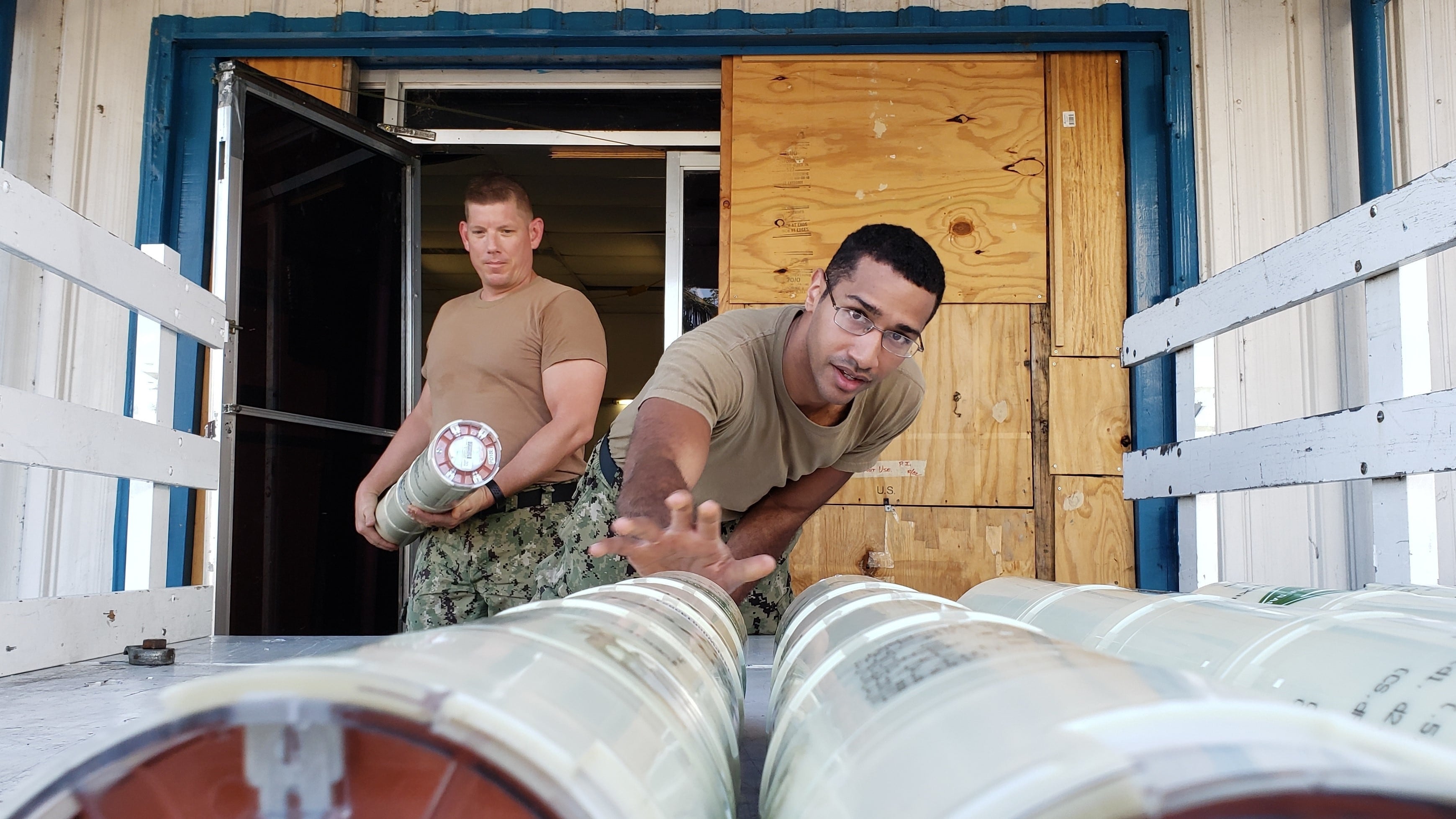WASHINGTON — The U.S. Navy is racing to field unmanned systems, and while much work remains for distributed, unmanned sensors and missile shooters, one area of unmanned warfare is seeing success: hunting and destroying mines.
Raytheon and Textron are working on a system that, when it’s fielded, will combine a sonar system and mine-killing weapons in one unmanned, remotely controlled system — a noteworthy leap forward for the Navy’s counter-mine efforts and the culmination of its yearslong push to “get the man out of the minefield.”
Ultimately this is the Navy’s long-delayed, much anticipated mine countermeasures mission package destined for the littoral combat ship.
Click here for more stories, videos and interviews from Sea-Air-Space!
Raytheon’s mine-hunting sonar, the AQS-20, is in the final stages of testing, and the service is close to declaring initial operational capability, which should be this summer, said Randy Brandenburg, a Raytheon business development executive with its Seapower Capability Systems division. The AQS-20, which is remotely monitored and controlled from a manned platform, deploys from an autonomous surface vessel developed by Textron called the Common Unmanned Surface Vehicle.
“We worked with the Navy and with Textron to develop a unique deploy-and-recovery system that allows the [AQS]-20 to be put into and recovered, and allows it to become part of this mission package, and we’ve been contracted to go out and build a few more of those,” Brandenburg said.
Once mines are detected, they will need to be destroyed. And for that the mission package, there’s a platform called the Barracuda Expendable Mine Neutralizer, which, once authorized by the operator, autonomously detects and destroys mines initially uncovered by the AQS-20.
“All three of these pieces are maturing right around the same time,” Brandenburg said. “We’re working hard to put this together and we’ll be demonstrating some of this … this summer.”
Raytheon has early versions of the Barracuda to demonstrate, he said, but initial design review is slated for this summer, followed by critical design review early next year. The mission module for LCS should be on track to reach IOC this summer.
RELATED

Delays and cuts
The mission modules for LCS, particularly the mine-hunting package, is almost comically late. The mine-hunting package was initially supposed to reach IOC in 2008, but is now more than a decade behind and counting.
The issue has made the sensor packages a target for appropriators looking for extra cash. Last year, appropriators cut all funding to the anti-submarine warfare package, and about 21 percent from the mine-sweeping package — or about $25 million.
But the cuts have been a result, at least in part, of the delays, said Thomas Callender, a retired submarine officer and analyst with The Heritage Foundation.
“The technical development issues and subsequent delays with several modules, especially the [anti-submarine warfare] and [mine countermeasures] mission packages, contributed to congressional angst and some of these cuts,” Callender said. “Many of these cuts, including the cuts recommended from the House Armed Services Committee and Senate Armed Services Committee for FY19 were reductions in the number of initial modules purchased until they have successfully completed operational testing.”
David B. Larter was the naval warfare reporter for Defense News.






